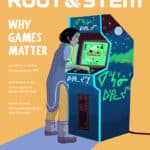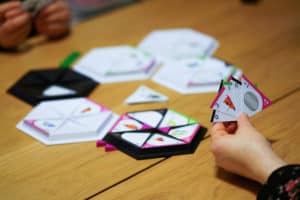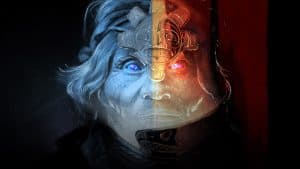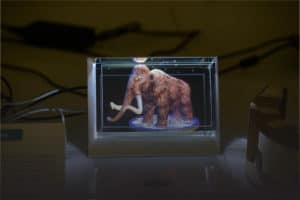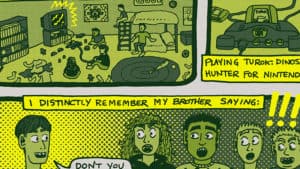The third issue of Root & STEM explores the role games play in our lives. What do games teach us about the world around us—and why does representation in gaming matter? These are the kinds of questions our guest contributors explore in this issue. We hope it inspires educators to consider how gaming is being used in the classroom as a teaching tool and as a platform for more diverse perspectives and stories to be shared.
Guest Editorial
Game Faces
Playing games is essential to everyone and has been for millennia. For 99.9 per cent of the time we’ve been playing games as a species, they have been unplugged. That changed in the 1900s with early mechanical games that eventually added electricity, and then again when games went digital in the 1970s. The electronic game industry took flight when the 1977 “Holy Trinity” was introduced to the world: the TRS-80, Commodore PET, and Apple II. Soon after, the computer game industry was born.
The earliest video games had no deep thoughts about what kind of character you played—the resolution was so low you couldn’t tell. Game design in the 1980s was more focused on screen layouts, action and setting. If you look at all the biggest hits of the ’80s, you’ll see a lot of abstract characterizations: Pac-Man, Defender, Lode Runner, Choplifter, and lots of tanks, planes and spaceships. There were few humans on the screen, and those that did appear were made up of so few pixels that you filled in the gaps yourself. The little pixel-person on the screen could be anyone you wanted them to be.
As computer technology matured in the ’90s, games became predominantly three-dimensional, and more realistic characters began to emerge. But 99 per cent of those characters were male. In 1996’s Tomb Raider, players could finally control a 3D female avatar, Lara Croft. Note that she was a white female, not an Indigenous person, Mexican, Asian, or other minority. It would take more time before diversity became a focus for game designers.
For kids, playing games is a way to learn about the world. Games allow players to explore cultural and social identities. But when you have a world full of white avatars, you have games that unintentionally perpetuate racial stereotypes.
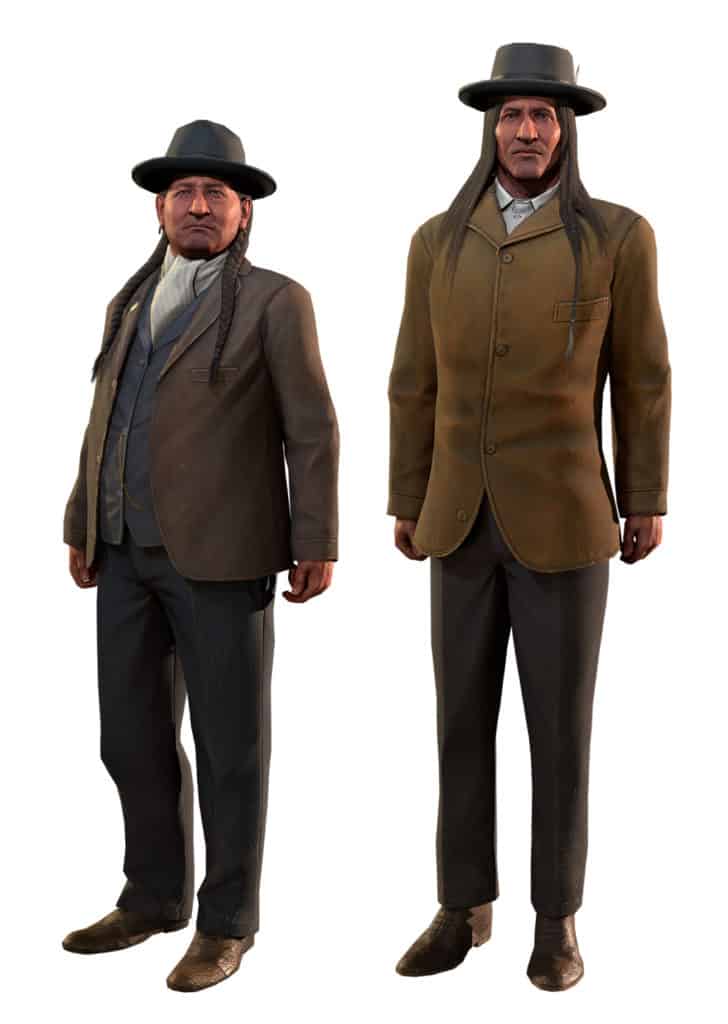
Over the last 10 years, programmers have been striving to make games and their characters more diverse. Nowadays, there are cultural funds that back development for games that feature Indigenous stories and characters. These games are essential to the Indigenous community and show the rest of the world what its culture is about and allow non-Indigenous players to immerse themselves in that other culture and learn about it. In our latest game, Empire of Sin, there are 14 boss characters for players to choose from. Two are Hispanic, a man and a 70-year-old woman. From the roster of 60 gangsters available for hire, two are Indigenous—one is Navajo, and the other is Cree, and they speak their native languages.
Since conversations about diversity have been spreading like a social tsunami, we have seen more in-depth characterizations of different races and cultures. Thankfully, now a diverse approach is expected, and game designers begin with that aspect in mind at the beginning of a game’s design. Today, the first question is “Who are you?” rather than “What do you do?” and games are better for it.
This makes for a more diverse, more inclusive world, and it benefits everyone. It’s excellent timing, now that games are the dominant media of the 21st century. I’m excited about the future of gaming, and this issue will shine more light on all the ways games are affecting our world.
– John Romero

Featured Content
Below is a collection of stories, activities, comics, and lesson plans featured in the third issue of Root & STEM.
